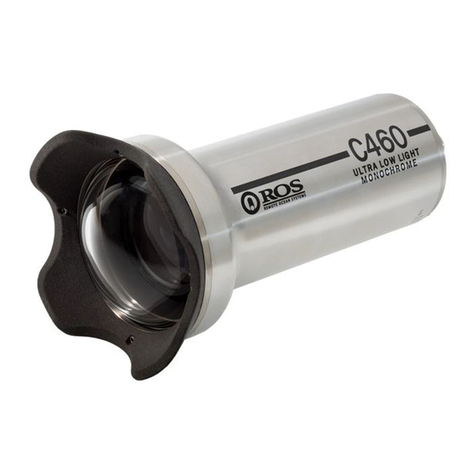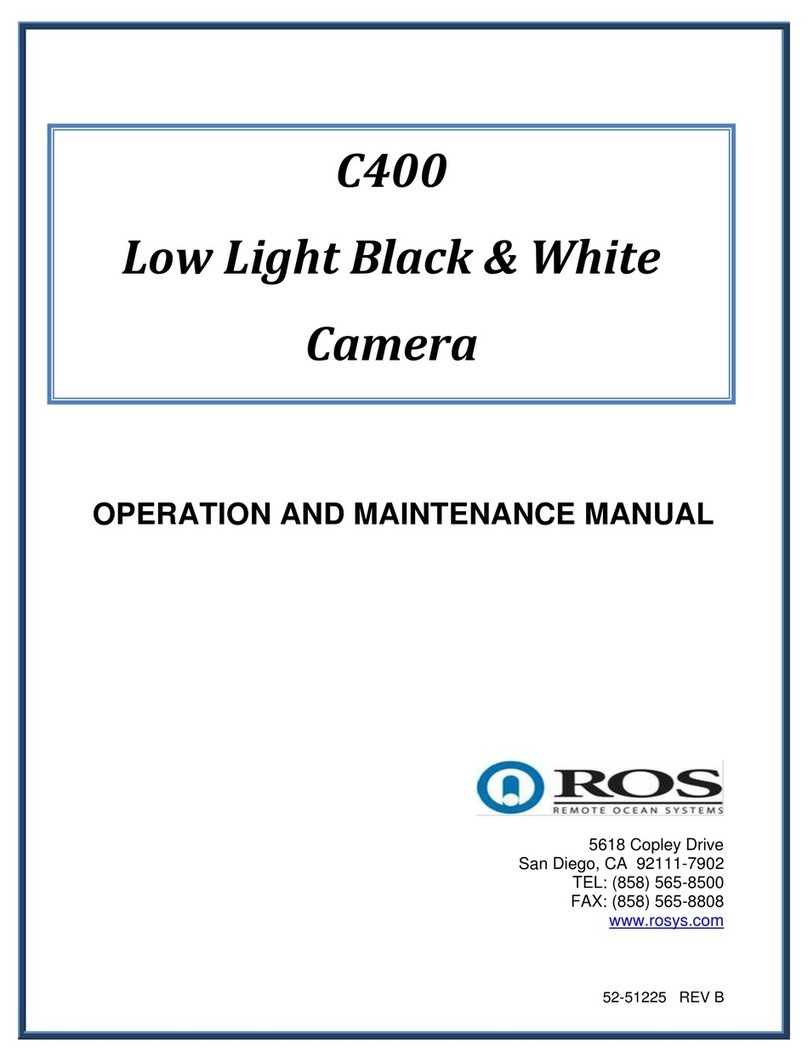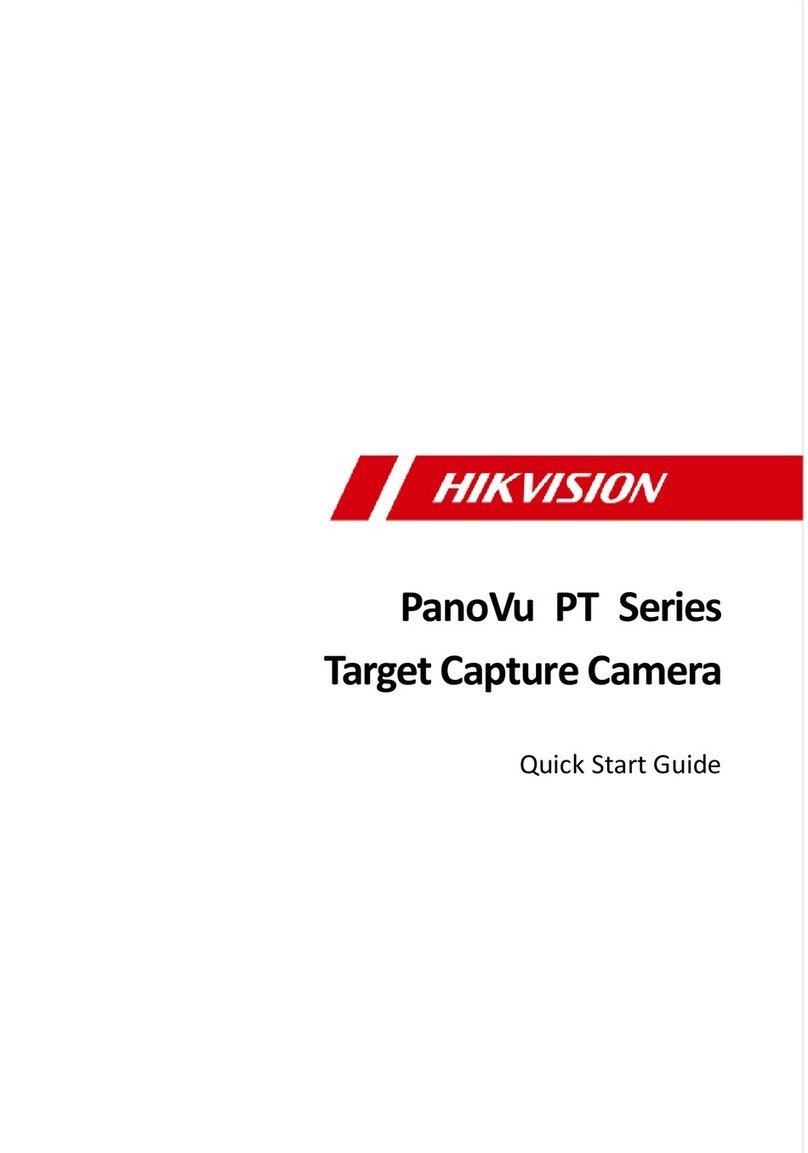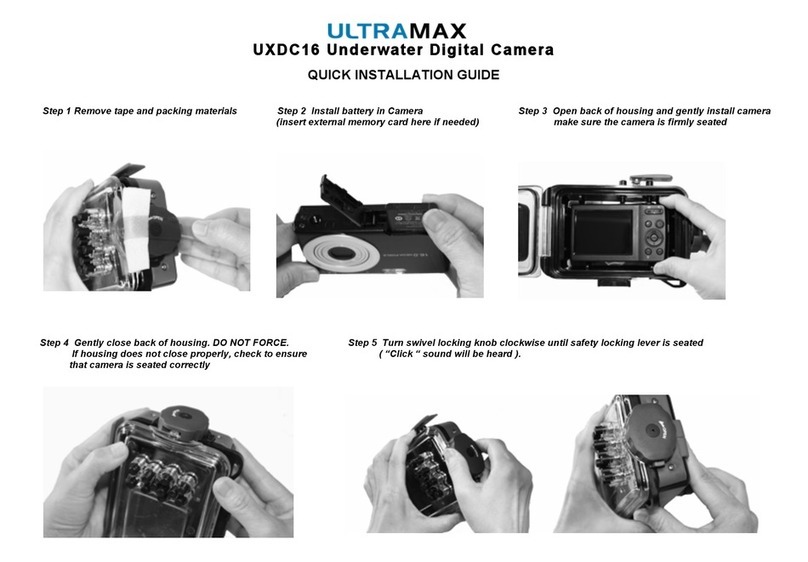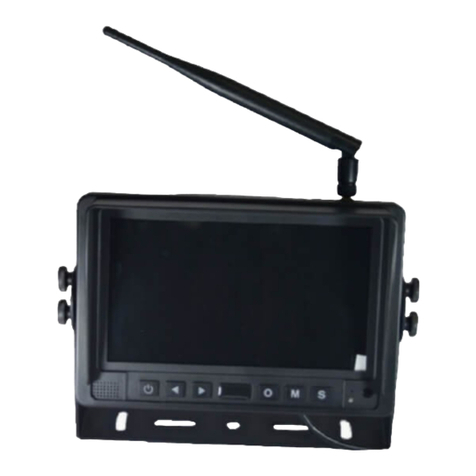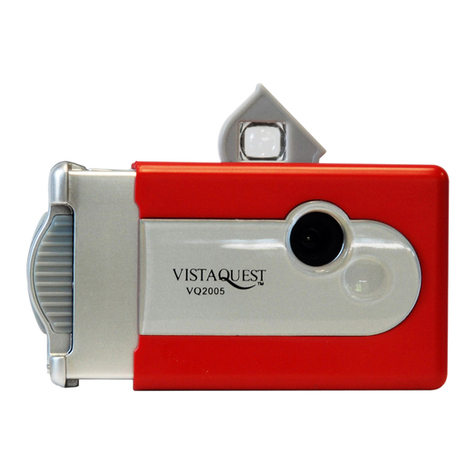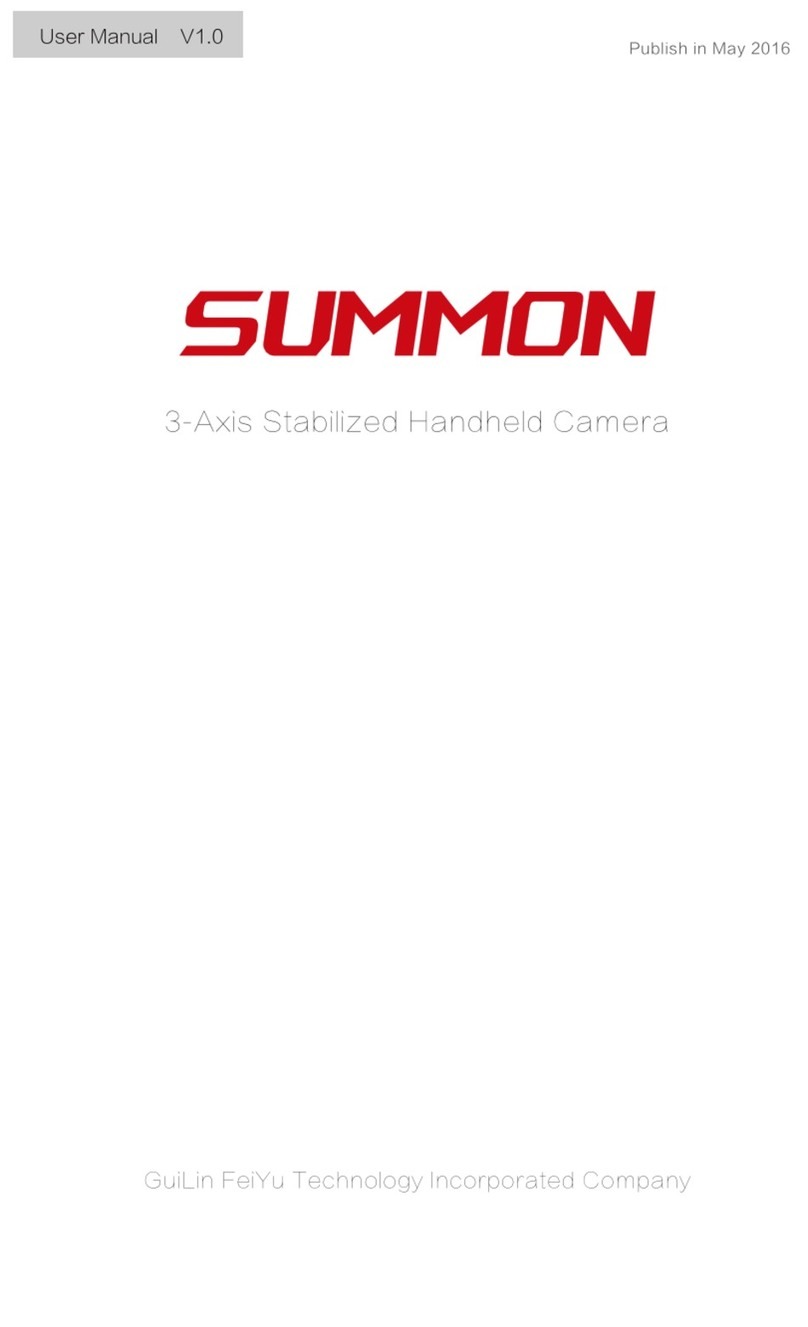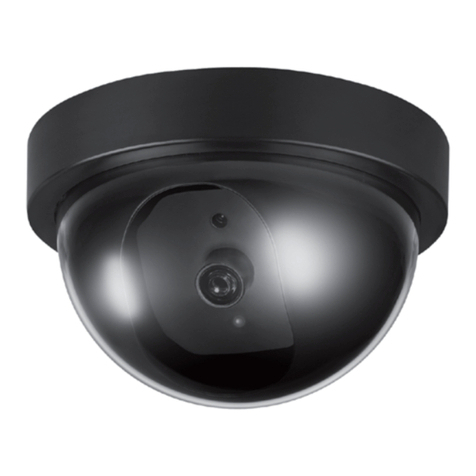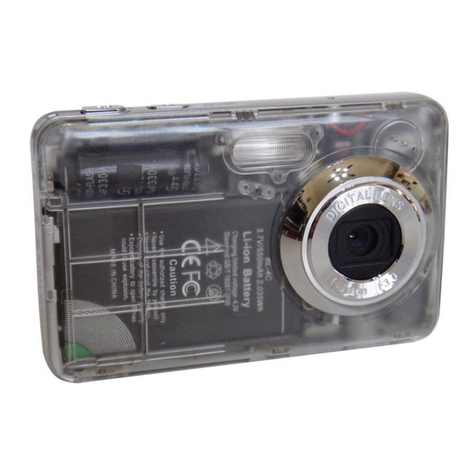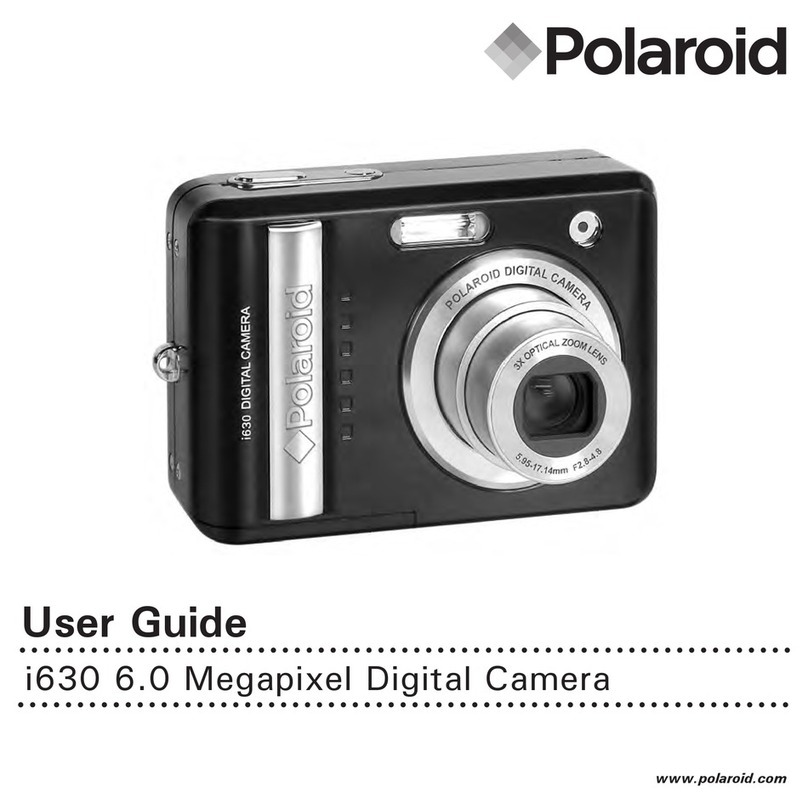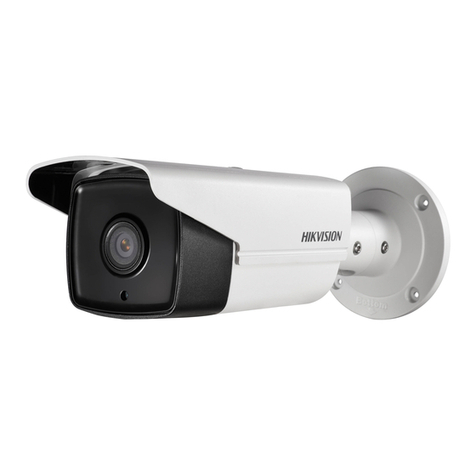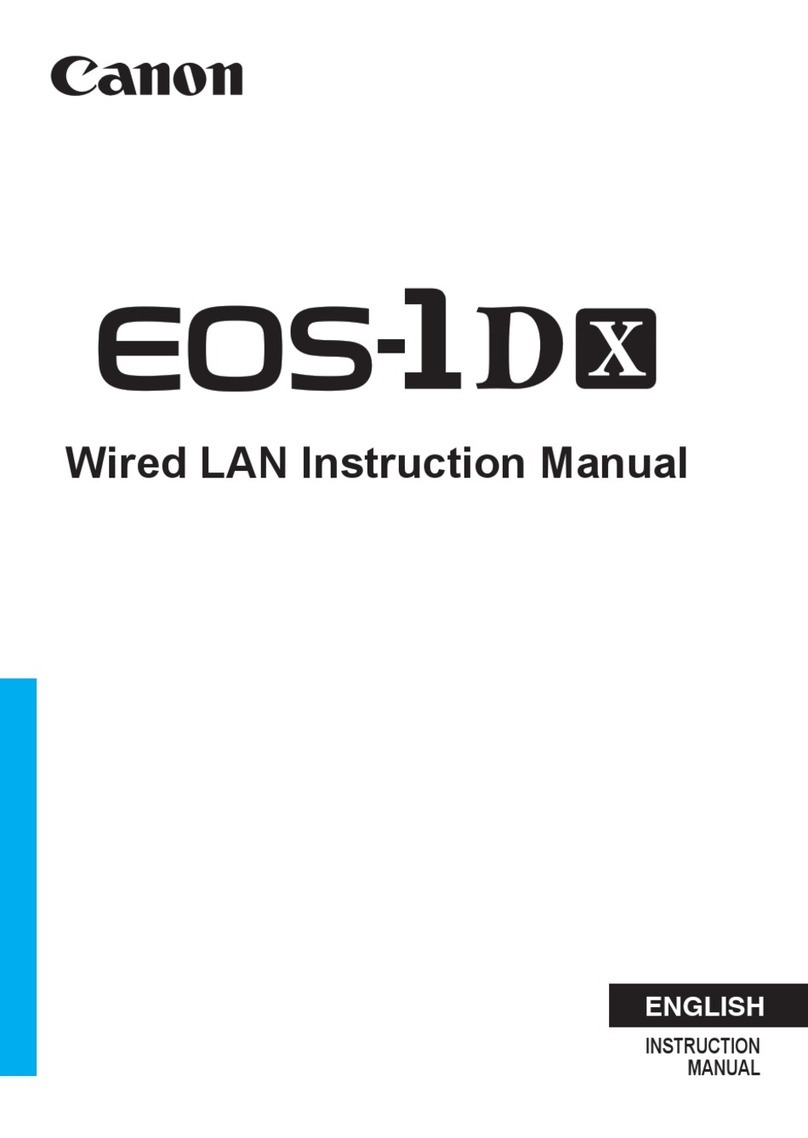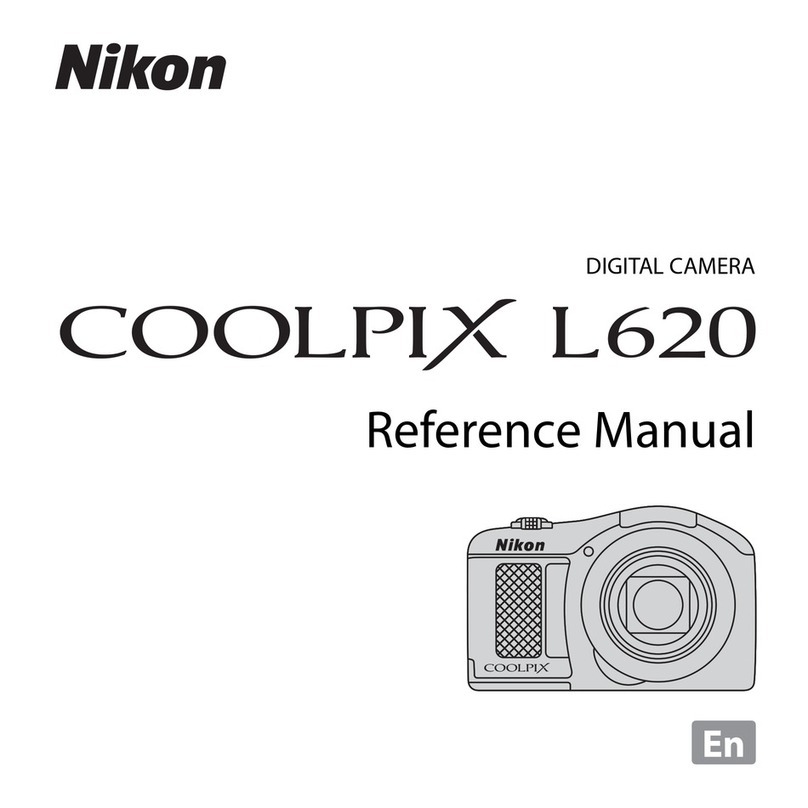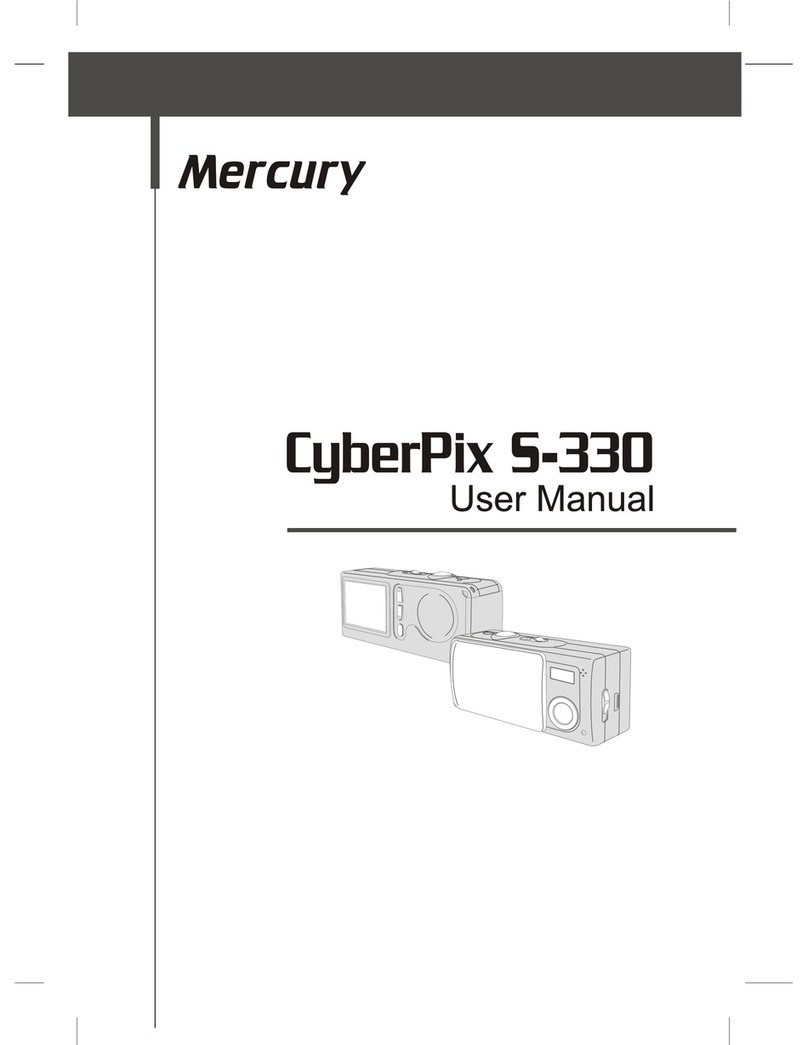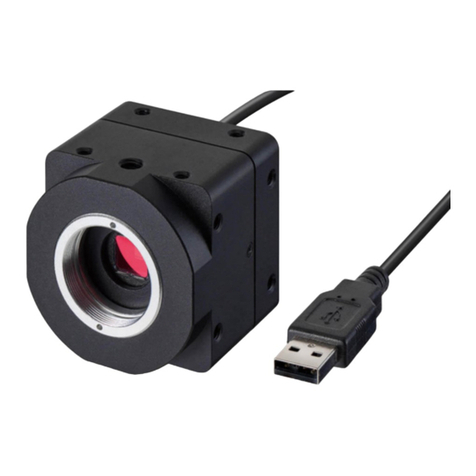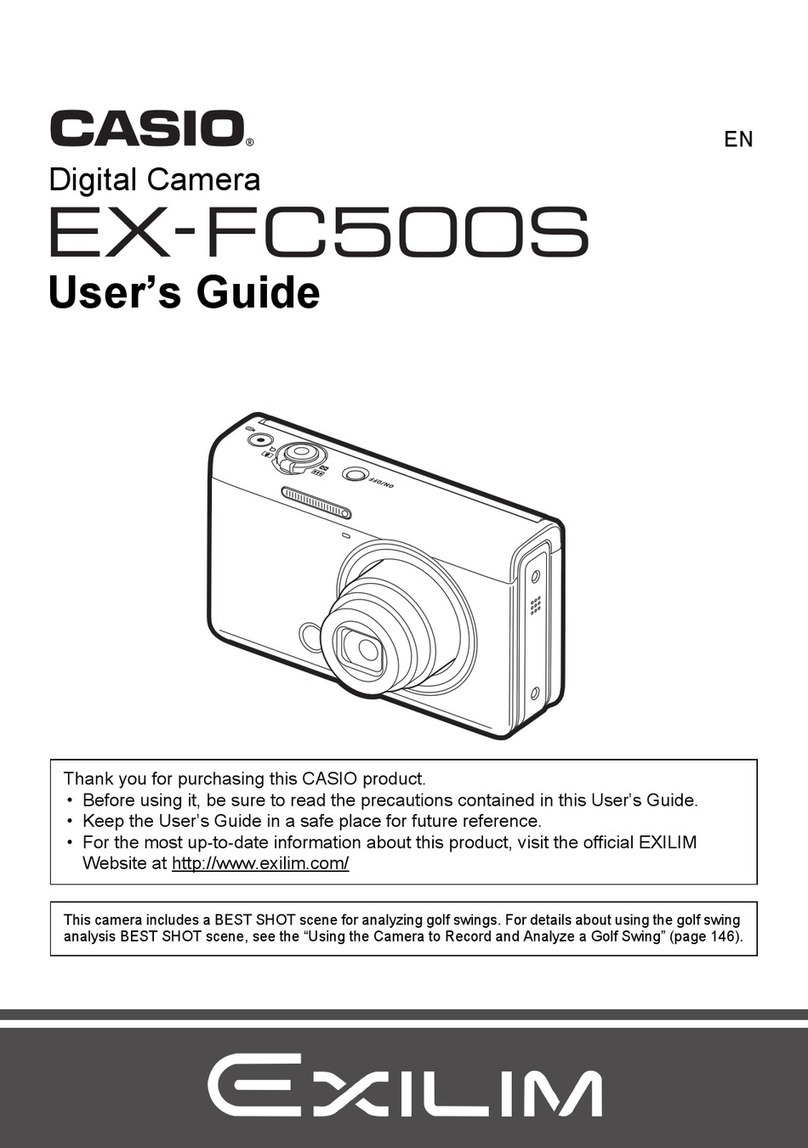Ros RS-485 CEX-HD User manual

52-51413 REV B
II
STANDARD ORDERING FORMAT FOR THE RS-485 CEX-HD CAMERAS

52-51413 REV B
III
TABLE OF CONTENTS
WARRANTY..................................................................................................................................IV
CUSTOMER ASSISTANCE...........................................................................................................V
CHANGE RECORD.......................................................................................................................VI
1DESCRIPTION ....................................................................................................................... 1
2RS-485 CEX-HD CAMERA SPECIFICATIONS .................................................................... 2
2.1 POWER .......................................................................................................................................2
2.2 CAMERA PERFORMANCE DATA..............................................................................................2
2.3 CONTROL SYSTEM....................................................................................................................3
2.4 FEATURES..................................................................................................................................3
2.5 DIMENSIONS..............................................................................................................................3
2.6 WEIGHT (LESS CONNECTOR) ........................................................................................................3
2.7 MATERIALS.................................................................................................................................4
2.8 ENVIRONMENTAL......................................................................................................................4
2.9 RS-485 CEX-HD CONNECTORS ...............................................................................................4
2.10 CAMERA INTERCONNECTIONS...............................................................................................5
3CAMERA OPERATION.......................................................................................................... 6
3.1 GENERAL....................................................................................................................................6
3.2 INSTALLATION ...........................................................................................................................6
3.3 CAMERA BOOT-UP SEQUENCE...............................................................................................7
3.4 EXPOSURE CONTROL ..............................................................................................................7
3.5 ZOOM CONTROL........................................................................................................................7
3.6 FOCUS CONTROL......................................................................................................................8
3.7 COMPUTER CONTROL..............................................................................................................8
4THEORY OF OPERATION .................................................................................................... 9
4.1 ELECTRONICS INTERFACE BOARD........................................................................................9
4.2 VIDEO SIGNAL............................................................................................................................9
5TROUBLESHOOTING ........................................................................................................... 9
5.1 GENERAL....................................................................................................................................9
5.2 CAMERA DISASSEMBLY.........................................................................................................10
5.3 CAMERA OPERATIONAL CHECKS.........................................................................................10
5.4 CAMERA TROUBLESHOOTING ..............................................................................................10
6MAINTENANCE ................................................................................................................... 11
APPENDIX.................................................................................................................................... 12

52-51413 REV B
IV
WARRANTY
Remote Ocean Systems, Inc. (hereinafter called "ROS") warrants its products as stated below
subject to the conditions specified.
ROS warrants its products, when operated under normal conditions, to be free from defects in
material or workmanship for a period of one year from the date of purchase providedthat inspection
by ROS discloses that such defects developed under normal and proper use. ROS products
repaired or replaced pursuant to this warranty shall be warranted for the unexpired portion of the
warranty applying to the original product. The liability of ROS under this warranty shall existsubject
to the following conditions:
(a) ROS is properly notified of such defects by Purchaser, and the defective product is
returned to ROS, transportation charges paid by Purchaser.
(b) ROS shall be released from all obligations under its warranty in the event repairs or
modifications are made by persons not authorized by ROS.
(c) Representations and warranties made by any person, including distributors and
representatives of ROS, which are inconsistent or conflict with the terms of this warranty,
shall not be binding upon ROS unless reduced to writing and approved by an officer of
ROS. ROS shall in no event be liable for other direct, special, incidental, consequential,
indirect or penal damages.
(d) This warranty shall be governed by the laws of the State of California.
In the event the defect is determined to be within the terms of this warranty, then ROS agrees to
repair and/or replace (at ROS' discretion) the product or defective portion at no charge to the
Purchaser. This warranty does not apply to expendable items or to normal wear and tear and is
conditional upon performance of normal preventative maintenance procedures.
Our commitment to quality and customer service directs us to constantly strive to improve our
products. The materials and specifications presented in our manuals and data sheets are correct
and accurate to the best of our knowledge, and are presented in good faith. However, the
information is not guaranteed and is subject to change without notice.
LIMITATION OF REMEDIES
Purchaser assumes all risk and liability for results obtained in any installation, operation, or use of
the product. Purchaser’s sole remedy for any breach of warranty by vendor shall be limited to the
“express remedies” set forth above. Otherwise, in no event shall vendor, its agents, or employees
be liable to the original purchaser or any third party for any consequential or incidental damages or
expenses of any nature arising directly out of or in connection withthe use ofvendorproducts.Even
if vendor has been advised of the possibility of such damages or expenses. In any event, unless
otherwise contrary to state law, vendor liability under this limited warranty shall not exceed the
purchase price of the product.

52-51413 REV B
V
CUSTOMER ASSISTANCE
ROS, Inc. uses a worldwide network of stocking distributors and representatives who are
familiar with our products and are able to provide assistance during installation and/or
operation of these products.
If you have any questions or problemswith this product that are not covered bythismanual
or instruction, please contact our agent in your area, or contact us directly by phone or fax
or email.
TEL: +1-858-565-8500
FAX: +1-858-565-8808
Sales: [email protected]
Web Site: www.rosys.com

52-51413 REV B
VI
CHANGE RECORD
REV DESCRIPTION DATE
A PRODUCTION RELEASE (EC-03235) 24AUG20
B SEE EC-03310 19JAN21

52-51413 REV B
1
1 DESCRIPTION
The RS-485 CEX-HD, is a high-performance miniature Color Zoom camera intended for
use in shallow water applications. It is rated to 70 meters water depth. The camera has
been designed from the outset with an eye towards simple, straightforward operation and
maintenance. All major subassemblies: RearEndcap, CameraElectronics InterfaceBoard
and Camera Module have been designed such that any part may be replaced in minutes
utilizing only minimal hand tools. Soldering skills are required only for major repairs or
modifications to the camera electronics.
The ROS RS-485 CEX-HD camera is illustrated by the installation drawings in the
appendix. The camera housing is constructed of hard-anodized aluminum or electro-
polished stainlesssteel and isdesigned to be operated in natural but hostileenvironments.
The front window is made of impact resistant optical grade acrylic and utilizes a single O-
ring seal.
The RS-485 CEX-HD camera utilizes a high resolution, Exmor R CMOS image sensor
coupled to a miniature 30:1 zoom lens in order to provide high-resolution video under
widely varying and adverse viewing conditions. Scene illumination and White Balance
correction is completely automatic. Auto-Focus and Auto-Exposure operation is enabled
upon power-up, but these may be overridden at any time with manual inputs if operating
conditions warrant.
The basic RS-485 CEX-HD camera is capable of providing video outputs in HD-TVI
In addition, circuits on this board generate the camera control commands sent to the zoom
camera module in order to achieve control of Focus position, Zoom position, Exposure
Settings and other special settings.
A wiring diagram (Drawing No. 52-51412) outlining the basic interconnections within the
RS-485 CEX-HD Camera is included in the Appendix of this manual.

52-51413 REV B
2
2 RS-485 CEX-HD CAMERA SPECIFICATIONS
2.1 POWER
Operating voltage: 11 - 26 VDC, Current varies with input voltage
Typical Power consumption: ~ 5 Watts
420 mA @ 12 VDC
200 mA @ 24 VDC
2.2 CAMERA PERFORMANCE DATA
Sensor: 1/2.8" Exmor R CMOS (STARVIS)
Pixels: 2.13M
Resolution: 800 TVL minimum
Scene illumination: 0.1 lux @ F1.6
Signal to Noise Ratio: >52 Db
Video Output HD-TVI
Zoom Range: 30:1 optical (4.3 to 129.0 mm focal length)
OR
Digital Zoom: 12x (360x with optical zoom combined)
Field of View In Air: 71.3oDiagonal (full wide angle)
58.9oH x 45.3oV @ full wide angle
2.1oH x 1.6oV @ full telephoto
Field of View In Water: 51.3oDiagonal (full wide angle)
43.4oH x 34.1oV @ full wide angle
1.6oH x 1.2oV @ full telephoto
Minimum Object Distance:
In air .01m @ full wide angle
1.0m @ full optical telephoto
In water .01m @ full wide angle
1.5m @ full optical telephoto
Iris Range Automatic, f/1.6 - f/5.0

52-51413 REV B
3
2.3 CONTROL SYSTEM
RS-485 camera controls: RS-485, 2 wire half duplex, 8-bit data, 1
stop bit, no parity, and no hardware flow
control.
Supported baud rates: 9.6k baud
Networkability: Must be used with ROS IC-LINK.
2.4 FEATURES
All features below are controlled via the IC-LINK:
•Zoom: Direct zoom position
•Focus: Automatic or manual. Manual uses direct focus position
•Exposure: Automatic or manual. Manual uses direct iris position
•Video Negative Art: Negates the video signal, can help with contrast in
some applications
•Video B&W: Transform the color video into black & white video
•Image Flip: Puts the image right side up when the camera is mounted
upside down
•Display: On or Off, displays icons with the camera status, zoom
progress bar, focus, exposure, etc.
2.5 DIMENSIONS
Length: (less connector) 5.70 inches (145 mm)
Diameter (max): 2.96 inches (75 mm)
2.6 WEIGHT (less connector)
Aluminum In Air 1.8 pounds (0.82 kg)
In Water 0.4 pounds (0.18 kg)
Stainless In Air 3.2 pounds (1.45 kg)
In Water 1.8 pounds (0.82 kg)

52-51413 REV B
4
2.7 MATERIALS
Housing: Hard-Anodized Aluminum or
Electropolished Stainless Steel
Viewing Port: Polished Acrylic
2.8 ENVIRONMENTAL
Operating Temperature: 0ºC to +50oC (32ºF to 122ºF)
Storage Temperature: -20oC to +60oC
Depth Rating: 70 m (230 ft)
2.9 RS-485 CEX-HD CONNECTORS
Hydrogroup LPMBH-6-MP (-01 configuration)
Endbell Connector: Hydrogroup LPMCBH-6-MP
Inline Mating Connector: Hydrogroup LPMCIL-6-FS
Figure 1: LPMCBH-6-MP Face View
1
2
3
6
5
4

52-51413 REV B
5
SUBCONN MCBHRA-8-MP (-02 configuration)
Endbell Connector: Subconn MCBHRA-8-MP
Inline Mating Connector: Subconn MCIL-8-F
Figure 2: MCBHRA-8-MP Face View
2.10 CAMERA INTERCONNECTIONS
CONNECTOR PIN FUNCTION
1 Camera Power Input (+11 to +26 VDC)
2 VDC Return
3 RS-485 A
4 RS-485 B
5 TVI Out
6 Ground
7 Spare (MCBHRA -02 only)
8 Spare (MCBHRA -02 only)

52-51413 REV B
6
3 CAMERA OPERATION
3.1 GENERAL
Operation of the RS-485 CEX-HD Camera is straightforward, but there are some
differences, which maynot be familiar to personnel accustomed to operating closed-circuit
TV systems. The RS-485 CEX-HD is designed to be used with only the ROS IC-LINK
controller.
3.2 INSTALLATION
STOP –WARNING! READ BEFORE DEPLOYING
The connector pins on this cable assembly are keyed to ensure proper alignment when
mated.
Forcing the connectors to mate with the pins misaligned will cause equipment damage not
covered under warranty.
For LPMBH-6-MP (configuration -01) the logos will be aligned as shown in Figure 3 when
the pins are aligned correctly.
Figure 3: Correct alignment of LPMBH-6-MP cable connector (-01 configuration)
For ease of mounting, the RS-485 CEX-HD camera has a mounting saddle, integral to its
housing, with two 1/4-20 UNC tapped holes on 2.00-inch mounting centers. The camera
must be mounted in a position that will protect againstimpactswithobstacles passingclose
to the camera. The camera housing should be electrically isolated from the mount with a
thin piece of rubber, electrical tape, or other non-conductive material in order to reduce
effects of galvanic corrosion from metal-to-metal contact in water.

52-51413 REV B
7
The pins on the camera connector should be cleaned and dried then sprayed with a
silicone-based lubricant. Grease should not be used on enclosed connectors such as the
standard LPMBH series. Grease will eventuallybecomeimpacted in thematingconnector,
forcing the contacts apart and causing intermittent operation.
3.3 CAMERA BOOT-UP SEQUENCE
When the camera is energized, the video signal consists of a blue screen for 5 to 7
seconds. Then the video as seen by the camera is displayed.
NOTE: While the camera is booting up, all RS-485 commands will be ignored. Only
after video is displayed on the screen will RS-485 commands be accepted.
3.4 EXPOSURE CONTROL
The RS-485 CEX-HDCamera providesoperationoverawiderangeofsceneilluminations.
For most operations, it is recommended to simply leavethe camerainautomaticexposure
mode, as it generally does very well at optimizing itself for the ambient illumination
conditions.
In the event that manual Exposure Control is desired due to unusual viewing conditions
such as severe reflections or flashing lights, the IC-LINK must send a manual Exposure
command followed by direct Iris position commands. The operator normally adjusts the
joystick slider to send a direct Iris position command until an optimum display is seen on
the television monitor.
To restore automatic Exposure Control: the IC-LINK must send EXP AUTO command.
3.5 ZOOM CONTROL
The zoom lens operates whenever the IC-LINK sends direct Zoom position commands.
The zoom function continues until the Zoom position reaches its commanded position or
the lens zoom limit is reached. The zoom position is relative to the position of the joystick
slider, moving the slider forward corresponds to Tele and moving the slider backwards
corresponds to Wide. Tele operates towards increasing focal length settings providing
reduced viewing angles with increased magnification of objects in the scene. Wide
operation reduces focal length settings increasing viewing angles and allows viewing of
greater areas of a scene.
When zooming towards the tele end from the full wide end, the optical zoom is activated
until the optical zoom limit is reached.

52-51413 REV B
8
When selecting different zoom lens settings, the operator shouldbeawareofthe changein
the Minimum Object Distance (MOD) as the viewing angle changes. At the full telephoto
position in air and water, the MOD is approximately 1.5m, while at the full Wide-Angle
position it decreases to the front of the window.
3.6 FOCUS CONTROL
The RS-485 CEX-HD camera is normally operated in Auto-Focus mode. This provides
nearly ideal focusing when the camera is aimed at different scenes and tracks while the
zoom control is actuated. In some instances where there are objects in a sceneatdifferent
distances and there isa need for focusing on specific objects, operation in a ManualFocus
Mode may be required. This is achieved by sending themanual Focus command followed
by the direct Focus position command to the IC-LINK. The focus function continues until
the camera reaches its commanded direct Focus position or the lens focus limit is reached.
To restore Automatic Focus Control: the IC-LINK must send the Auto Focus command.
Generally, most in-air users are able to stay in Auto-Focus mode all the time. The one set
of conditions which may force the operator to switch into Manual mode, is when viewing a
relatively close object that does not have much sharp detail. This occurs because the
Auto-Focus system relies on increasing the sharpness of edges in the viewed image in
order to optimize the focus.
If there are no edges to utilize for this process, the Auto-Focus will not be able to properly
compensate and may even tend to "hunt" around the optimum focus point. Focus hunting
may also be caused by lowillumination. Again, if the camera is unable toproperlysharpen
edges due to insufficient video level, Auto-Focus operation will be less than optimal.
Switching over to Manual mode by sending direct Focus commands is the best option.
Underwater users have a special set of considerations which may make Auto-Focus
operation more difficult. Some underwater environments contain particles in suspension
and un-dissolved solids that tend to reduce the detail of a viewed image. If the image does
not have sharp detail, the Auto-Focus system will have a difficult time obtaining correct
focus. In those cases, manual operation may be a better choice.
3.7 COMPUTER CONTROL
All camera features arecontrolled using halfduplex2-wireRS-485. TheROSIC-LINKmust
be used to operate the CEX-HD.

52-51413 REV B
9
4 THEORY OF OPERATION
4.1 ELECTRONICS INTERFACE BOARD
The electronics interface board assembly contains the following circuits: Power
Conditioning, circuits required to decode Focus, Zoom, Exposure and other special
commands and RS-485 circuits.
Details of interconnections between the electronics Interface board, the camera module
and the main connector are shown on Wiring Diagram 52-51412.
4.2 VIDEO SIGNAL
The camera module within the camera assembly generates a HD-TVI signal.
5 TROUBLESHOOTING
5.1 GENERAL
In the case of any sort of malfunction of the camera system, it is wise to resist the
temptation to completely tear down the system and start replacing components
indiscriminately. Many times, a quick call to the ROS Technical Support Department will
help with restoring operation with minimum effort. Mostfailuresinthefieldgenerallytendto
be cabling problems, and the camera is typically the least likely cause.
If any camera functionality is lost, you may not be getting power to the camera. Turnoffthe
power and disconnect your cable from the camera. Then, turn on the powerand measure
the voltage at the camera end of the cable according to your camera’s pinout. If there is
no voltage or low voltage, then you have cabling issues. Normally, all voltage levels
present at this connector are referenced to Signal Common (normally Pin 2.) Camera
power should be between +11 and +26VDC.
It is a common mistake to reverse RS-485 channels on the controller side. In other words:
Controller RS-485 channel (A) is connected to camera channel (B) and vice-versa, which
can lead the user to think that the camera is not responding to commands. Swapping
communication channels while power is applied to the camera will not cause damage to
any of the RS-485 transceiver electronics.
If all video has been lost, use a standard DVM on the ohm scale to check the center
conductor of the coax for continuity. This is normally Pin 5 on the standard connector, and
exits the user controller on the middle pin of the BNC connector for example. Normal
resistance should only be a few ohms unless the system cable is extremely long. If all
appears well at this point, the next step is to open up the camera housing and check the
electronics Interface board and internal wiring for proper operation.

52-51413 REV B
10
5.2 CAMERA DISASSEMBLY
The RS-485 CEX-HD Camera Assembly is fairly easy to disassemble.
1) Remove the stainless-steel snap ring retaining the rear end bell to the
camera housing.
2) Remove the seal screw in the rear endbell.
Next Very Carefully:
3) Use a standard air chuck (preferably with a rubber tip) to slowly pressurize
the housing until the camera slides out the back. Do not pressurize too
quickly or the camera may tend to become airborne as it exits the housing.
4) Once the camera electronics assembly is out of the housing it should be
placed on a non-conductive surface and secured to prevent accidental
damage.
5.3 CAMERA OPERATIONAL CHECKS
Fuse F1 on the electronics interface board assembly should be checked for continuity. F1
is a 1.25A 32VDC fuse element that protects the camera module from excessiveloadsand
in the event of accidental shorts to camera power or control lines. If F1 is open or has an
impedance greater than 10ohms, it can be removed and replaced by soldering the
component off the board. Naturally, before powering upthecameraagain,the causeofthe
output overload should be identified and corrected.
5.4 CAMERA TROUBLESHOOTING
Check if the indicator LED (D3) on the 54-00446 is turned on. If the indicator LED is not
turned on and F1 has an impedance of less than 3 ohms the 54-0046 circuit board may
have to be replaced, ROS' Technical Services Department should be contacted for
assistance.

52-51413 REV B
11
6 MAINTENANCE
Maintenance of the camera is typically limited to cleaning, and maintenance of the O-ring
seals on the window and rear end plate. The acrylic window should only be cleaned with a
commercial lens cleaner or with a mild soap and water. Use only asoft cloth or lens tissue
to avoid scratching the surfaces.
Anytime the housing isremoved the O-rings shouldbe carefullyinspectedforcuts,tears,or
any other damage and replaced if necessary. The new O-ring should be given a light
coating of silicone grease or other O-ring lubricant before re-assembly.
On the internal camera assembly, ensure that all electrical connectors are correctly fitted
and all cabling is secured.
As the camera is being re-assembled just before the camera is sealed in the housing,
blowing dry airor nitrogen into the housing ishighly recommended, to avoid condensation
on the inside surfaces, especially the frontport. Thisisespeciallyimportantifthe camerais
being sealed in a humid environment. Excess humidity inthehousingwillnormallyresult in
fogging of the window and may cause eventual damage to the camera electronics through
corrosion.

52-51413 REV B
12
APPENDIX
RS-485 CEX-HD CAMERA DRAWINGS
52-51405 Top Assembly, RS-485 CEX-HD
52-51411 Installation, RS-485 CEX-HD
52-51412 Wiring Diagram, RS-485 CEX-HD
Table of contents
Other Ros Digital Camera manuals

